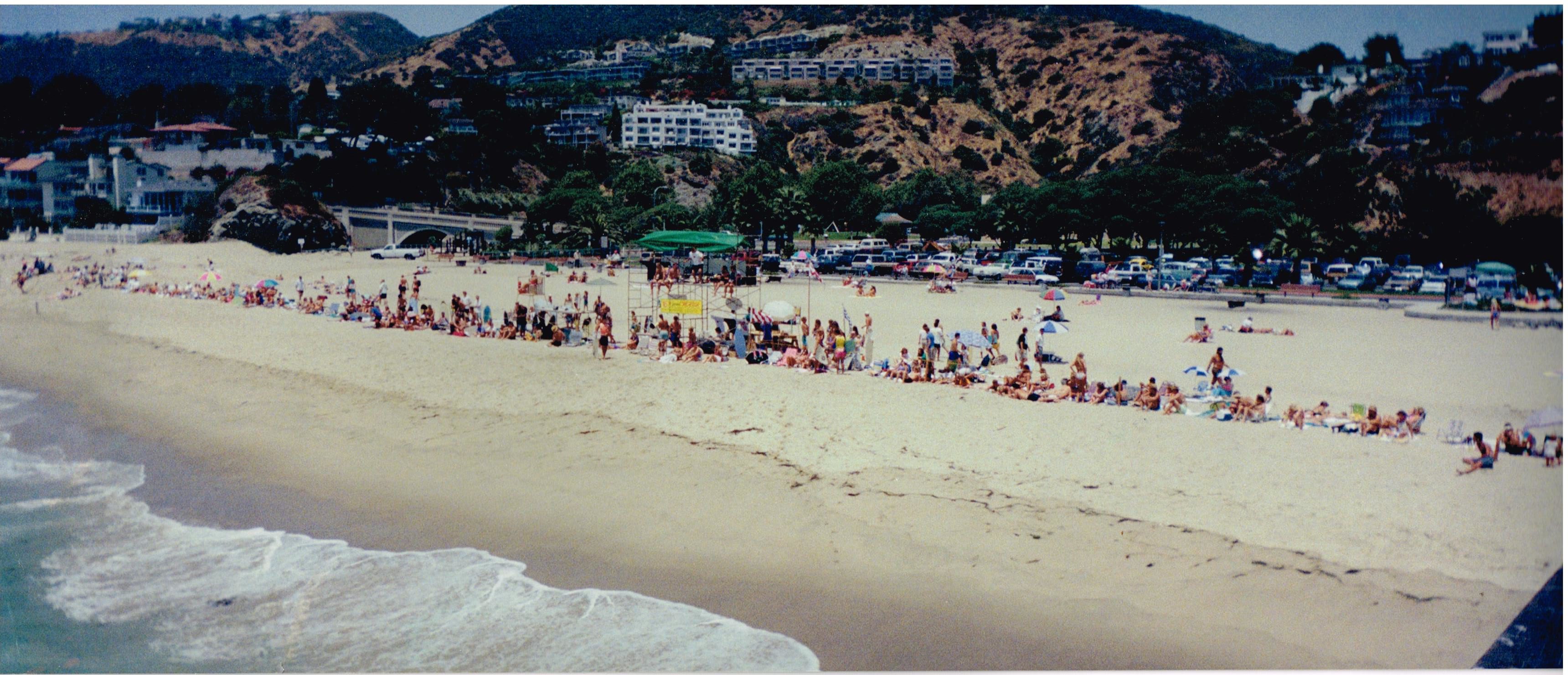
Victoria Skimboards is just one in an infinite series of hydroplaning ventures going back in time to the earliest rock skippers. Seriously, any flat thing, if accelerated fast enough, can bounce, or skip, plane or slip across water in a near frictionless manner. Start with flat stones, proceed to wood slabs, apply technology, voila, you have the progression.
Generally we credit the Hawaiians, and surfing, in all it’s styles, for the perpetuation of skimboarding, hydrosliding, skidboarding, or whatever it has been called. The islanders had very short solid wood boards they called paipos that were used for bodysurfing. Sliding around on the shorebreak sand was always an option for the Hawaiians. They loved to slide on anything. Tea leaves down slick muddy slopes for starters. Wooden sleds to ride down steep grassy hillsides were a forerunner of todays’ downhill skateboarders. Surfing waves on longer solid wood boards was just one of many types of sliding sports for them.
Prior to World War I and the introduction of plywood in 1928, solid wood boards were the only form of skimboards. Two lifeguards in Laguna Beach, George Griffiths and his friend Jimmy were photographed skidboarding on a device called the Hydroplane which was introduced by Evinrude as a way to promote their new outboard motors. It was two planks of redwood, connected by three strips of oak held on by small machine screws and square nuts recessed into the wood. About 5 ‘ long, with no curve at all, they were towed behind a boat much like a wakeboard today.
After the introduction of plywood, skimboarding really took off. Through out the 30’s 40’s and 50’s round discs and flat beaches were the hot ticket. One could run and jump on, glide a long way, then jump off and kicking it ahead, chase it down and jump on again, with an endless series of one-leg stands, spinners etc.
For some obvious geologic reasons, Laguna’s path took a slightly different turn. Our hilly topography, dropping off into deep waters are somewhat unique when combined with our lack of decent sized surf, since Laguna is blocked by the Channel Islands. Locals in Laguna, at several different coves, took the traditional round boards and stretched them out into ovals, the better to carve off the waves that can break right on shore. That was the beginning of the skimboarding renaissance. I came along when this was well under way, at about age 11. My parents had selected a small cottage to share with two other families during the year. It was half way down the stairs to Victoria Beach. I had been surfing since about age 6 at San Onofre. We would drive down from Pasadena to spend the day at San O before dragging our sandy sleepy exhausted bodies back to Pasadena in a one-day marathon of surf, eat, and sleep.
After the introduction of plywood, Skimboarding really took off.
(Picture: Tex Haines in his teenage years sliding on plywood Skimboard at Victoria Beach)
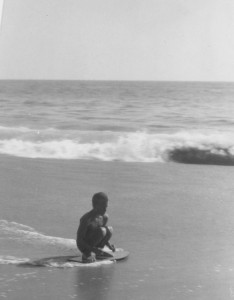
By renting out the cottage we could spend and entire weekends at San O with much less effort.
And of course I got to see all the local kids ripping off huge flips, massive wave bashes and totally fun long slides down the slopes. We could buy skimboards from the Carpenters Market at Bluebird Street. Little tombstone shaped pieces of plywood no more than 3/8″ thick, the top of the board probably said Slider, or Skidboard, or Rosebud (See the classic movie, Citizen Kane) or something like that in tiny wood burned letters.
We also knew that the constructions sites all had scrap plywood that they used to roll the wheelbarrows over. These were the best. Free. Pre curved to slide better, and free.
As we grew up, some of the locals made their own boards, from the comically crude, to the LSD influenced fully airbrushed, bone crushing slab, of Nebula Quasar, to the delicately tapered swallow tailed scythe that Jay Williams shredded on.
Our sport was called skidboarding when I was growing up. When we started Victoria Skimboards in 1976, we changed it to skimboarding, because we felt it was a more positive description.
We beach rats, or groms as they called us, talked about making boards all thru our teenage years. During college, I was aiming for veterinary medicine until getting derailed shortly after graduation. There were only 12 schools in the US and my odds, as in grades, were not good. I learned that Stanford was the worst school to come from if I wanted to get into Davis. They just didn’t think of Stanford students as being from the farm. Ha!
Back to Laguna and some construction jobs, working for contractors, mostly digging and hauling materials up steep slopes for patios and remodels. Right away I learned to appreciate hard labor. My friend Peter Prietto got me a job working for Rainbow Sandals and I was working there when Pete and I began talking about maybe actually finally doing something with skimboards. This was 1975.
(Picture: Skim Legend Chris Henderson)
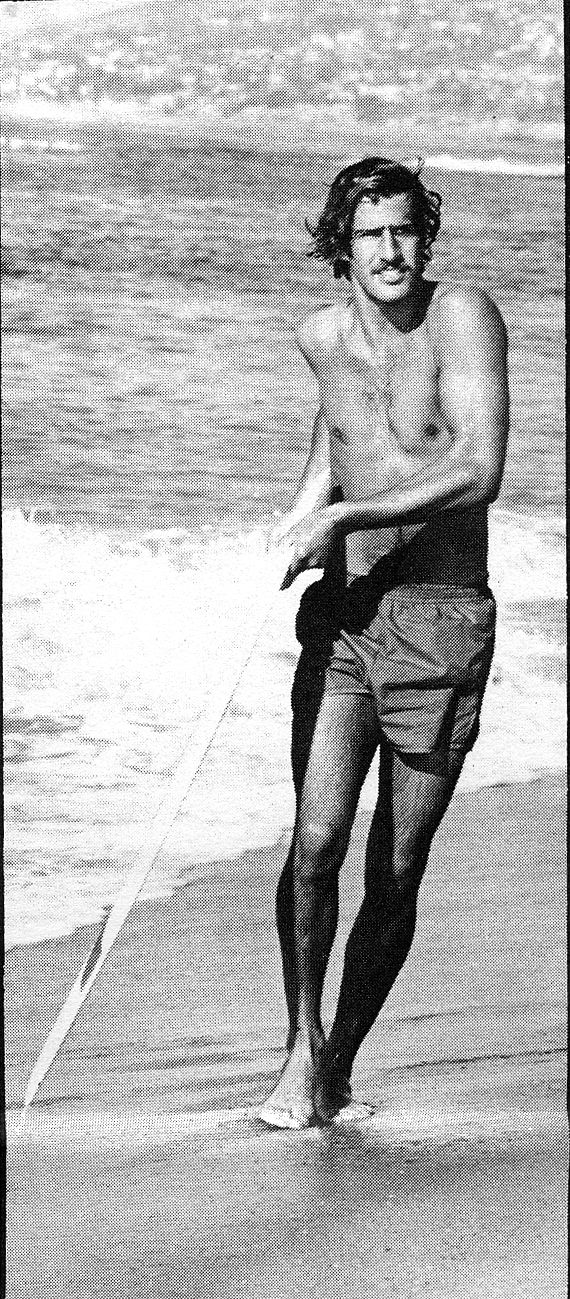
… in 1976, We changed it to “skimboarding”, because we felt it was a more positive description.
We got the OK from our boss, Jay” Sparky” Longley, to work part time and right away went out and bought some plywood and fiber glassing materials and set to making boards in Pete’s N. Laguna studio apartment. It was upstairs and within moments the guy from downstairs was upstairs and in our face about being asphyxiated by resin fumes. It appears that styrene vapors can go thru wall. They are that obnoxious.
We were getting resin on the floors too often when a couple artists down the street offered us a small garage to work in for a very modest rent. That lasted until the neighbor began complaining about the smells but by then we were ready to move to our first shop in Laguna Canyon at 2935.
To make a long story short, we made a batch, marched down to Hobie Sports in Dana Point and sold them, and were told to expect a reorder soon. We were off! In 1980 we introduced the first foam core skimboards, much like standard surfboard construction. We use wood stringers at first but quickly abandoned them, as they were too ineffective at holding the foam in the correct curve for glassing.
We built the first foam cores skimboards on the market in 1980 and that, as they say, really changed the sport.
Foam boards could be as much as 30% larger, without being too heavy. The extra surface area allowed us to plane a lot further across the water, hit the waves earlier and with larger size, and tube riding the shorebreak became far more possible.
The rest is history.
This year will mark our 40th Annual Victoria Skimboards contest at Aliso Beach. The single oldest and most prestigious contest of it’s kind in the world, August 27, 28. We hope to see you there.
Still sliding after all these years,
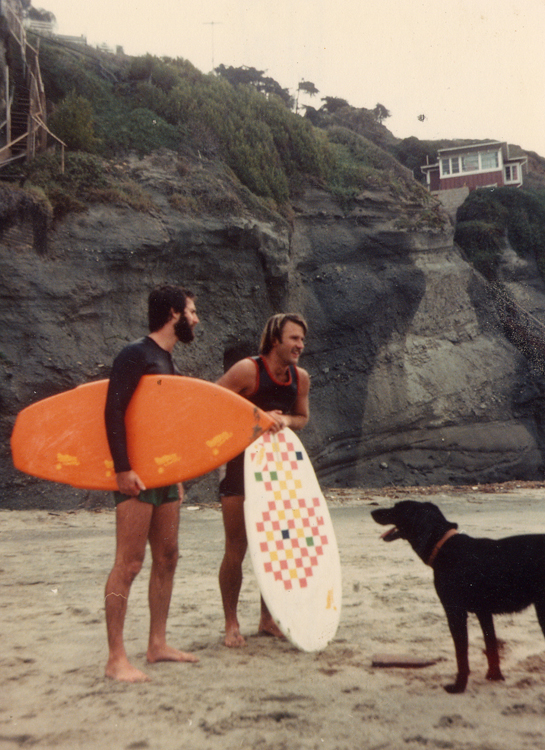
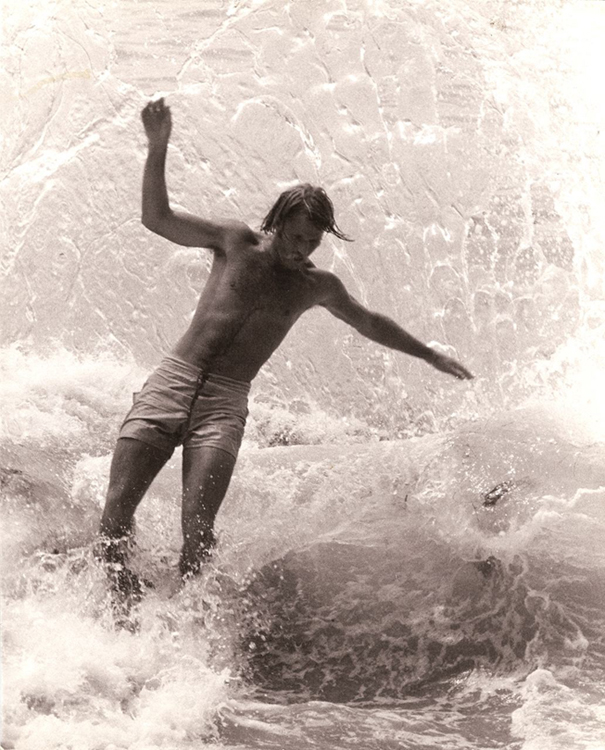
Tex Haines
President and Co-founder
Victoria Skimboards
